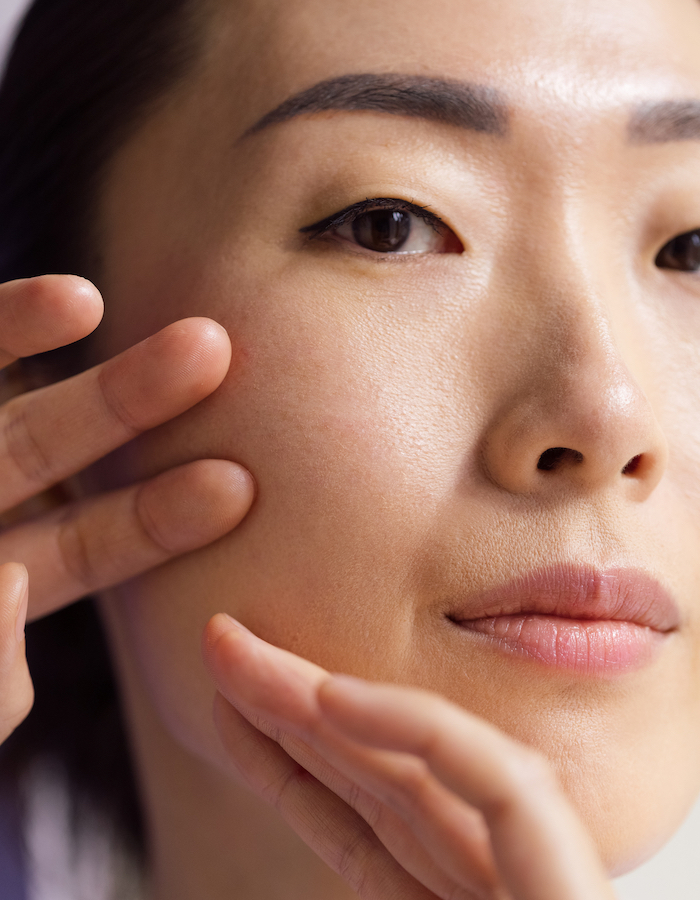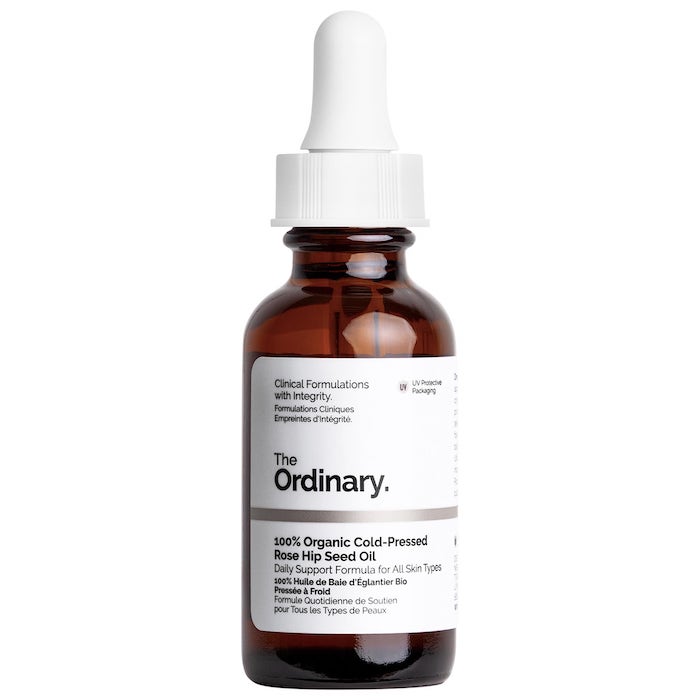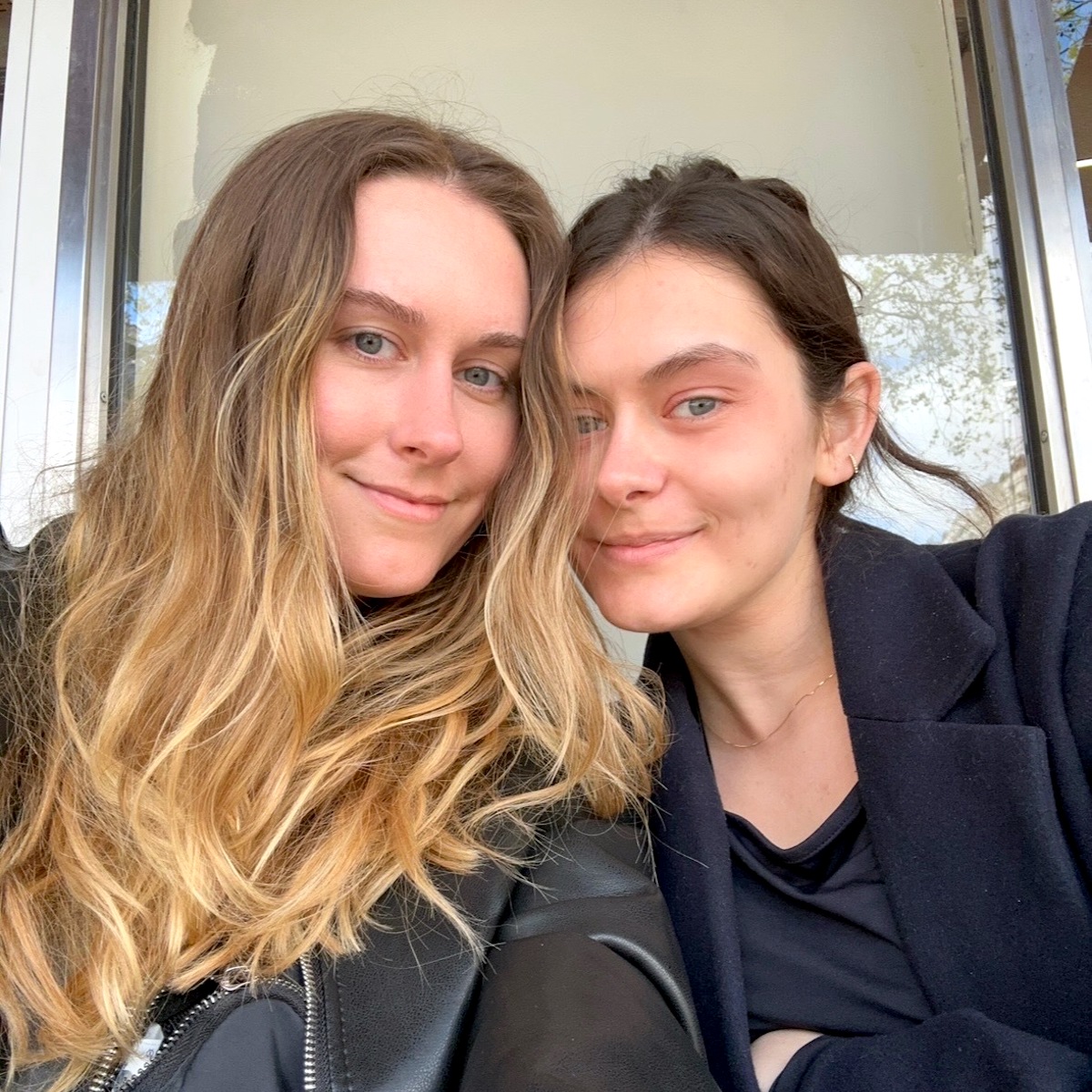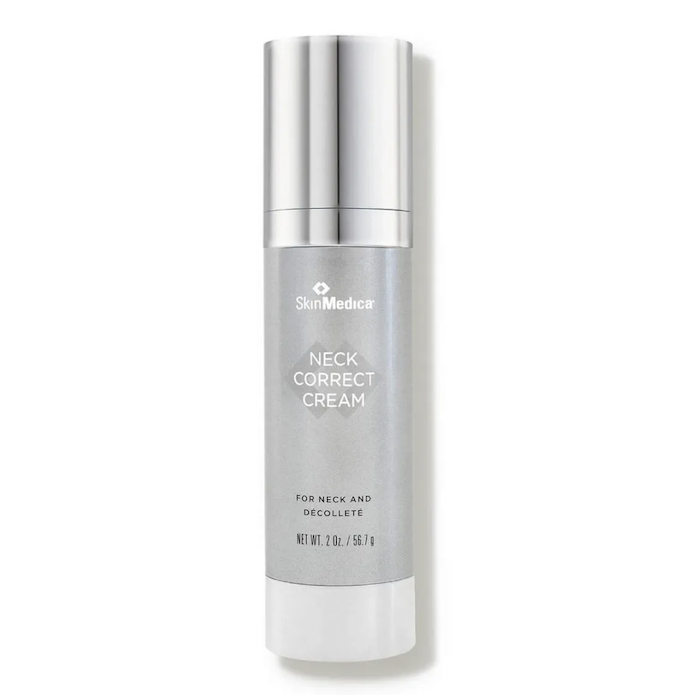Face Massages Are Bigger Than Ever, But Will They Eff Up Your Filler? Answers Ahead


Scroll through Instagram or TikTok, and I guarantee that you come across at least one video detailing how to do an at-home face massage for fresher, brighter, and more sculpted-looking skin. Advocates often share some pretty epic before-and-after photos to prove that face massages have improved their appearance. And while I can't personally confirm the validity of the thousands of posts on social media, skin experts say there are real benefits to face massages, including lymphatic drainage and increased circulation.
I do a five-minute face massage each morning to reduce puffiness and refresh my dull, tired-looking skin. But lately, I've been wondering if I can stay committed to this little ritual. I'm entering the last year of my 20s, and I've started to see signs of aging appear. Yep, that means I'm officially considering getting small amounts of Botox and filler to course-correct. After doing some research, I've seen conflicting advice on whether or not to continue face massages post-injections. Some people say it's fine; others say it will cause the filler to dissolve or even migrate. So, what's the truth? I reached out to three skin experts to find out once and for all.

First, what's the difference between botox and filler?
Anetta Reszko MD, PhD, is a dermatologist and dermatologic surgeon. "Fillers are injectable substances made usually with hyaluronic acid or calcium hydroxylapatite," she says. "They are primarily designed to add volume and contour the face, particularly as we continue to lose our ever-so-valuable subcutaneous fat with age." While many people conflate filler with Botox, it's important to know that they're two different things. Not only do they work differently, but they also target different aesthetic concerns.
Dr. Jimmy C. Sung, MD, is a board-certified plastic and reconstructive surgeon and medical director at Tribeca Aesthetics in New York City. He says the difference between fillers and Botox comes down to whether you want to "add" to or "subtract" from your appearance. "Fillers are products that increase volume," he says. "On the other hand, while fillers are used to 'add,' neurotoxin such as Botox is used to 'subtract' motions and volume. Neurotoxin paralyzes the muscles. Its primary use in aesthetic medicine is to address dynamic wrinkles by decreasing muscle movement. Interestingly, neurotoxins are now being used to reduce volume. When a muscle is paralyzed, it will decrease in size due to lack of use. Neurotoxins can be used to reduce volumes, such as the masseter muscles to improve jawline or slimming down the shoulders -popularly known as 'Barbie Botox.'"
He says filler can generally be divided into two types: semipermanent and nonpermanent. Semipermanent filler works as a stimulant to induce collagen synthesis. Nonpermanent filler, on the other hand, is made from hyaluronic acid (HA) and is dissolvable with enzymes. Choosing the right one for you comes down to your specific goals and concerns. But for Reszko, hyaluronic acid (or non-permanent) filler is the way to go. "They are able to more naturally infuse with our own tissue and the hyaluronic acid we biologically produce," she says. "HA-based fillers also have an edge in that they are dissolvable, while calcium-based fillers cannot be dissolved.

In what areas is filler commonly injected?
Sung says there are "danger zones" around the face that providers should avoid while injecting filler. "The main concern is causing blockage of the vessels, which can lead to skin loss or even blindness," he says.
Reszko agrees, although, she notes that risks are majorly reduced by going to an experienced provider. "At the end of the day, filler can truly be placed anywhere. The most important factor is having a skilled injector who is aware of the underlying facial anatomy, as injecting filler into vessels in the face can be very dangerous. Filler can be placed in the cheeks to lift and add contour, to the temples to round out the face, to the jawline to sharpen the angle, and to tend to jowls. It can be added to the lips to augment and shape, to the forehead to lift the brows, to the nasolabial folds to smooth the smile line, and in any single place on the face to smooth imperfections. In the neck, it can be used to smooth wrinkles and any other unwanted divots."
Purvisha Patel, MD, is a double board–certified dermatologist and founder and CEO of Visha Skincare. She agrees that fillers are best placed in areas that lose volume over time, saying, "such as the temples, tear troughs, smile lines, and lips. Injectors should avoid areas of high vascularization where there is risk of embolization of the filler."
How long does filler usually last?
"The duration of filler varies depending on the type of filler used, the area treated, individual factors like metabolism and lifestyle, and the amount injected," Reszko says. "Individuals who are very active tend to work through filler more quickly. This is multifaceted, as in part it is due to the fact that they have a higher resting metabolism, but also is related to the tension that is often held in the face during physical exertion. Filler is worked out of our systems more quickly with a lot of muscle activity in the region. You can expect filler in the chin, for example, where little to no muscle movement occurs, to last up to a couple of years following injections. Alternatively, an area such as the lips, where movement constantly occurs, lasts more along the lines of 9-12 months"
If you're going with HA filler, Reszko says there's another factor to consider. "Specific regions of the face carry different concentrations of hyaluronidase (the natural enzyme that breaks down HA)," she says. "For example, the under-eye region carries very low concentration of this enzyme, while the lower face and jawline carry high concentrations. Therefore, filler will last longer in the under-eye region as compared to the jawline. On average, hyaluronic acid fillers typically last 6 to 18 months, while semi-permanent fillers like Radiesse may last up to 12 to 18 months. Collagen stimulators like Sculptra can last even longer, with results potentially lasting two years or more."
What Is the proper aftercare for filler?
Getting filler is relatively quick and easy, but it requires proper post-injection care to make sure you (and your new look) are safe. "The main concerns are swelling and bruising," Sung says. "Therefore, it is a good idea to avoid alcohol, sauna, and rigorous exercise for 24–48 hours [post-filler]."
Patel seconds this, saying, "It is best not to sleep or put pressure on the area that got filler." For example, if you get cheek filler, and you're a side sleeper, make sure to sleep on your back until the filler has settled.
As for Reszko, she says light pressure (such as putting on makeup or washing the face) is fine, but avoid firm pressure for approximately four hours after injection. This will ensure the placement of the filler isn't altered. "If the filler was injected around the mouth or in the lips, patients should avoid moving the area excessively or using a straw," she adds. "Following filler injection, the skin may feel a bit dry to due alcohol and aluminum chloride used during injections to stop bleeding at puncture sites. Hydrate the skin well during the day of injections with a moisturizer such as Environ Super Moisturizer ($62) or Environ Colostrum Gel ($68). Swelling is a normal occurrence after injections and can be treated at home with a light lymphatic drainage facial massage."

Will face massages eff up your filler?
Now, for my most burning question, will face massages cause filler to migrate or dissolve? Now, you might have caught Reszko's passing mention of face massage as a way to manage swelling, but is there more to the story?
For Sung, face massages could, in theory, cause filler to dissolve quicker, but that's in theory. "Theoretically, any method of increasing metabolism and movement to an area will increase absorption," Sung says. "However, the most reliable method of dissolving hyaluronic acid is using dissolving enzymes." In other words, without dissolving enzymes in the picture, face massage won't necessarily or definitively affect filler.
As for Reszko, she says face massages won't affect filler as long as you avoid it for the first four hours after injection. "It takes about four hours for filler to settle into the tissue to where it cannot be further molded in the skin, and after two weeks is entirely incorporated into your own tissue," she says. "Massages will have no effect on the longevity of filler duration. It does not increase the metabolism of the substance in any way. Not only will it not interfere with the placement of the filler, but it is recommended in the weeks following filler injection to do light lymphatic drainage massages in the treated areas to decrease expected swelling. You can apply light pressure using your hand or an at-home facial device with microcurrent technology going from the medial to the lateral face. In general, following an up-and-out sweeping motion for best efficacy in drainage. It is best to pair lymphatic drainage with a facial oil so as to not pull on the skin."
There you have it. Face massages won't necessarily affect filler placement or longevity, which means I can continue to practice them each morning. Ugh, I love getting answers to my most burning beauty questions. Until I decide whether or not to go through with filler for the first time, I'm stocking up on the best complexion-boosting skincare products.
Shop 10 of my favorite skincare products to use while contemplating filler:

I love using firming peptides in my skincare routine.

This is a retinol alternative I trust.

An overnight mask that makes your skin bouncy by morning.

This sunscreen leaves virtually no white cast.

One of my favorite face oils to use for an at-home face massage.

This Glossier serum is one of my favorites.

This is one of my favorite vitamin C products of all time.

Another moisturizing oil to use for an at-home face massage.

Kaitlyn McLintock is a Beauty Editor at Who What Wear. She has 10 years of experience in the editorial industry, having previously written for other industry-leading publications, like Byrdie, InStyle, The Zoe Report, Bustle, and others. She covers all things beauty and wellness-related, but she has a special passion for creating skincare content (whether that's writing about an innovative in-office treatment, researching the benefits of a certain ingredient, or testing the latest and greatest at-home skin device). Having lived in Los Angeles, California, and Austin, Texas, she has since relocated back to her home state, Michigan. When she's not writing, researching, or testing beauty products, she's working through an ever-growing book collection or swimming in the Great Lakes.
-
 Derms and Beauty Editors (Hi, It's Me) Swear By This Straight-From-Nature Skin Hero That's DIY Mask–Approved
Derms and Beauty Editors (Hi, It's Me) Swear By This Straight-From-Nature Skin Hero That's DIY Mask–ApprovedThis is your sign to start slathering it on.
By Jamie Schneider
-
 My Sister and I Have Opposite Skin Types, But These Products *Magically* Work for Both of Us
My Sister and I Have Opposite Skin Types, But These Products *Magically* Work for Both of UsThese are our "unicorn" products.
By Kaitlyn McLintock
-
 I Polled Our Editor Slack Channel—10 French Beauty Products We’d Buy From Ulta’s Spring Sale
I Polled Our Editor Slack Channel—10 French Beauty Products We’d Buy From Ulta’s Spring SaleBy Alyssa Brascia
-
 5 Underrated Pillars of Youthful and Glowing Skin, According to Zendaya's Facialist
5 Underrated Pillars of Youthful and Glowing Skin, According to Zendaya's FacialistI'm taking so many notes.
By Shawna Hudson
-
 Aestheticians on Instagram Can't Stop Raving About This Acne-Clearing Serum, so I Tried It
Aestheticians on Instagram Can't Stop Raving About This Acne-Clearing Serum, so I Tried ItIt's perfect for sensitive skin.
By Shawna Hudson
-
 I Just Visited the Rainforest—These Were the Beauty Products That Proved Essential
I Just Visited the Rainforest—These Were the Beauty Products That Proved EssentialTravel dryness? I don't know her.
By Shawna Hudson
-
 The Numbers Don't Lie—WWW Readers Shop These 11 Products the Most, and They're on Sale RN
The Numbers Don't Lie—WWW Readers Shop These 11 Products the Most, and They're on Sale RNSaving on your faves is basically a profit… It's girl math.
By Alyssa Brascia
-
 Chic Londoners Love This Ultra-Light Moisturizer, and No Lie, It Saved My Angry Winter Skin
Chic Londoners Love This Ultra-Light Moisturizer, and No Lie, It Saved My Angry Winter SkinIts key ingredient changed everything.
By Alyssa Brascia




